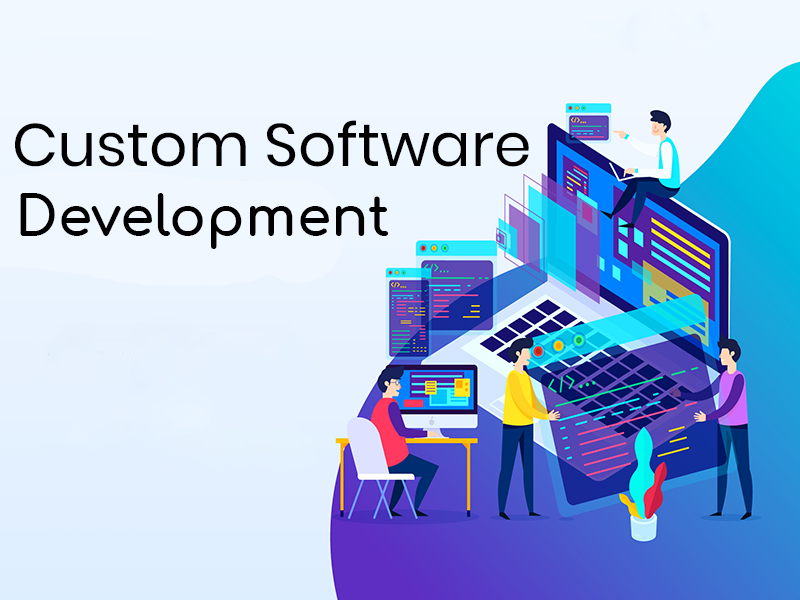Custom Software Development Services & Modern Practices — CodeSuite

Custom software development services fill this gap by creating software applications for users or organizations. Unlike generic off-the-shelf solutions, custom software is built from scratch to address a company’s unique functionalities, workflows, and integrations.
Custom software development services allow businesses to address their needs, optimize workflows for better efficiency, and enhance data security to meet compliance requirements. By offering these key benefits, custom software development empower businesses to thrive in the digital age.
Custom Software Development Services Process
Requirement Gathering and Analysis
This initial phase is critical to project success. It involves understanding business needs, goals, and challenges through stakeholder collaboration. By engaging in workshops, interviews, and discussions, we gather detailed information that helps us define software requirements. This stage ensures that we have a clear and comprehensive understanding of what the software needs to achieve and the specific functionalities it should possess.
Feasibility Study
Conducting a feasibility study is essential before developing. This study assesses the project’s practicality in terms of time, cost, and technology. We evaluate the development timeline based on software complexity and required resources. Additionally, we provide a precise cost estimate to ensure the project aligns with the budget. Lastly, we assess the technological landscape to identify the most suitable programming languages, frameworks, and tools. This phase ensures we set realistic expectations for the project’s scope and timeline.
System Design
Once the requirements are precise and feasibility is confirmed, we move on to the system design phase. Here, we create a detailed software blueprint, defining its architecture, modules, interfaces, and data design. This involves mapping out how the software will function, ensuring an intuitive and user-friendly experience. The system design serves as a roadmap for the development team, guiding the construction of a robust and efficient software solution.
Development and Implementation
With the design in place, the development phase begins. Our skilled programmers build the software based on the defined requirements and designs. This involves writing the code for the core functionalities and integrating various components to ensure they work seamlessly together. The software takes shape at this stage, translating the blueprint into a tangible and operational product.
Integration and Testing
Integration and testing are crucial for ensuring software quality and reliability. During this phase, we integrate all the developed modules and rigorously test the software for bugs, vulnerabilities, and performance issues. Our testing team conducts various tests to identify and fix problems, ensuring the software operates efficiently and can handle the expected user load. This meticulous testing process is vital for delivering a high-quality, reliable software solution.
Deployment
We move to the deployment phase once the software has been thoroughly tested and deemed ready. This involves releasing the software into the production environment for use. Deployment makes software accessible to intended users within an organization or the public. A smooth deployment process ensures a seamless transition and minimizes operational disruptions.
Maintenance and Updates
Our commitment to the software extends beyond its launch. We provide ongoing maintenance and support to ensure software optimization and security. This includes fixing issues post-deployment, addressing user feedback, and implementing necessary updates and improvements. Regular maintenance ensures the software continues to meet users’ evolving needs and performs efficiently.
Evaluation and Feedback
Continuous evaluation and feedback are essential for software success. We gather user feedback through surveys, interviews, and support tickets to understand how the software performs in real-world scenarios. This feedback helps us identify areas for further enhancements and plan future updates. By maintaining a continuous cycle of evaluation and improvement, we ensure that the software evolves and adapts to meet the changing needs of the business and its users.
Modern Practices in Custom Software Development
Agile Methodology
Modern software development services follow the Agile methodology, which focuses on an iterative, user-centric approach. This methodology allows for increased flexibility and adaptability to changing requirements, ensuring that the final product continuously evolves to meet user needs and expectations. Agile promotes regular collaboration, frequent feedback, and incremental progress, making adjusting to changes and delivering high-quality software easier.
DevOps Integration
DevOps practices bridge the gap between development and operations, creating a culture of collaboration and shared responsibility. DevOps enables faster and more reliable releases by automating the software delivery pipeline. This integration improves development cycle efficiency, reduces error risk, and enhances software quality.
Microservices Architecture
Modern software development services use microservices architecture. It involves designing software as a collection of loosely coupled, independently deployable services. This architecture enhances scalability, flexibility, and maintainability by allowing individual services to be developed, tested, and deployed separately. It also makes it easier to update and scale specific parts of an application without affecting the whole system.
Cloud-based Deployment
Cloud infrastructure has become a standard practice in custom software development services. Cloud-based deployment offers scalable, cost-effective, and secure hosting solutions. It enables remote access and simplifies software updates, making it easier for businesses to manage and maintain their applications. Cloud services also provide robust security measures and ensure high availability and disaster recovery capabilities.
Continuous Integration and Deployment
Continuous integration (CI) and continuous deployment (CD) are essential practices in modern software development. These practices automate the build, test, and deployment processes, ensuring that code changes are constantly integrated into the main codebase and deployed to production. CI/CD pipelines enhance software releases’ consistency and reliability, reduce time to market, and allow rapid response to feedback and issues.
Selecting the Right Custom Software Development Partner
Expertise and Experience
When selecting a custom software development service partner, evaluating their expertise and experience is crucial. Assess the provider’s track record by reviewing their portfolio and case studies to understand their past projects and successes. Look for industry-specific knowledge that aligns with your business needs, as this can significantly influence the effectiveness of their solutions. A provider with a proven history in your industry will understand and address your unique challenges.
Communication
Transparent communication is essential for software development success. Establish clear communication channels and project governance from the outset. Ensure the provider has a robust communication strategy, including regular updates, progress reports, and meetings. This helps maintain alignment between all stakeholders and promptly addresses any issues or changes. Clear communication reduces misunderstandings and keeps the project on track.
Security and Compliance
Security and compliance are critical factors in software development. Verify the provider’s security practices and ensure they adhere to relevant industry regulations and standards. This includes data protection measures, secure coding practices, and compliance with GDPR, HIPAA, or other industry-specific requirements. A development partner who prioritizes security and compliance will protect your business and data from potential risks.
Considering Scalability and Maintenance
Evaluating the provider’s ability to support your software’s growth and ongoing maintenance is essential. Consider their experience with scalable solutions that grow with your business. Additionally, assess their maintenance and support services to ensure they can provide timely updates, bug fixes, and enhancements as your needs evolve. A partner who offers comprehensive support will ensure your software’s long-term success and reliability.





